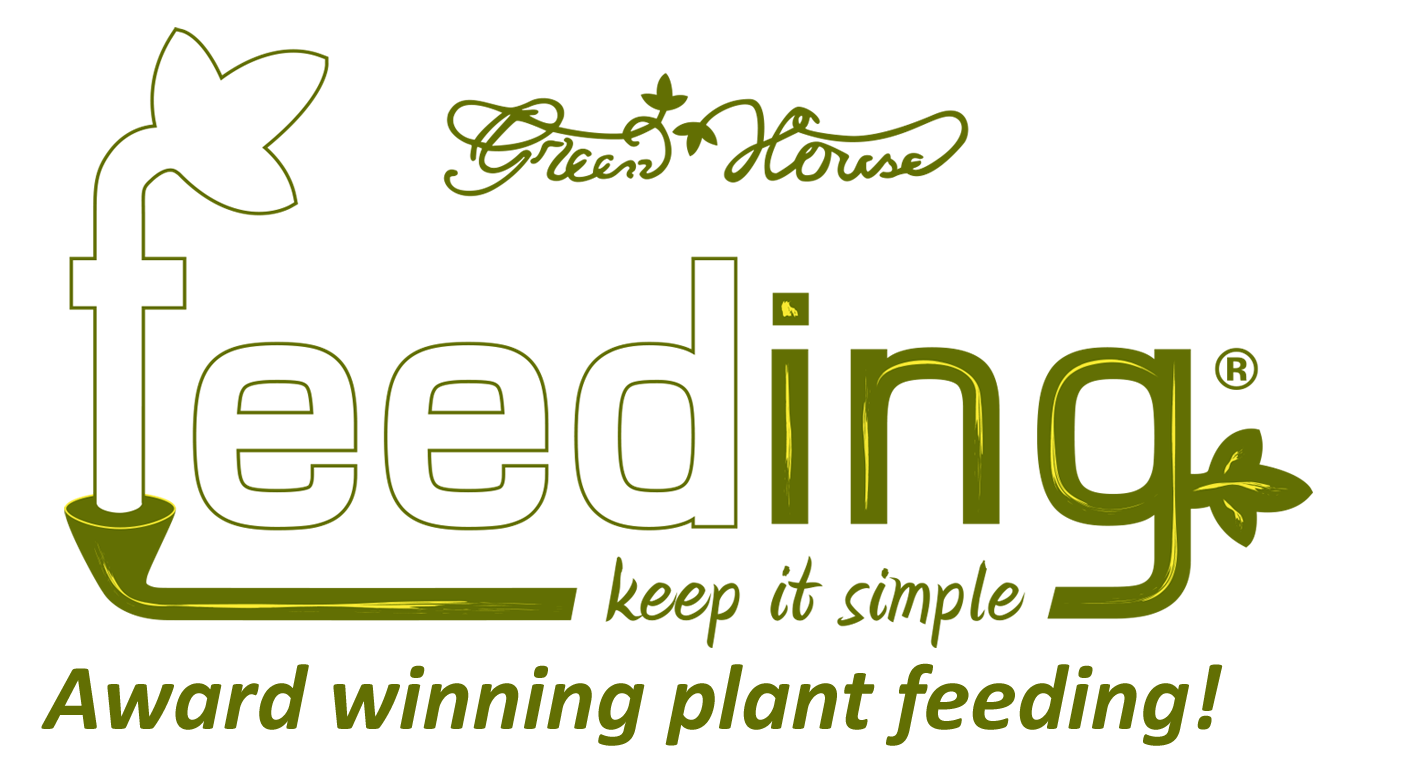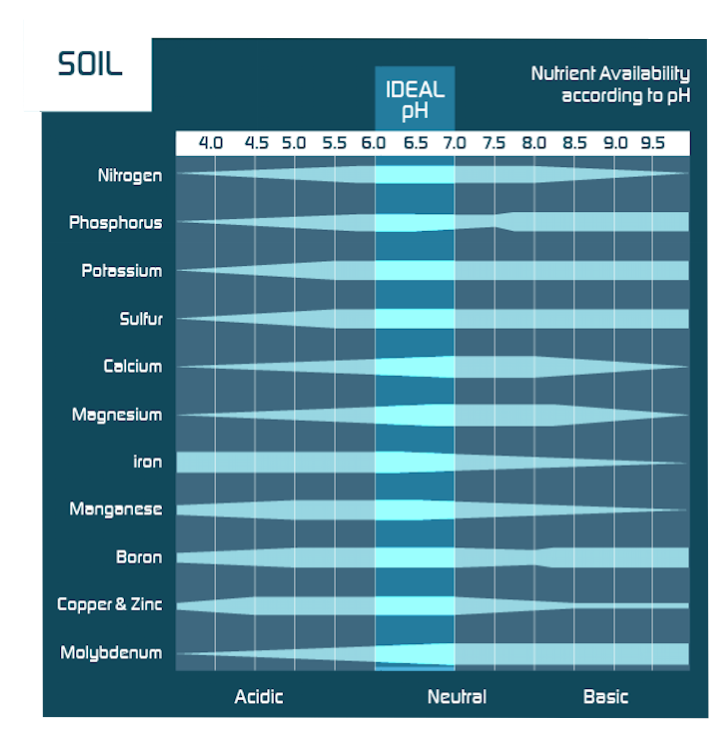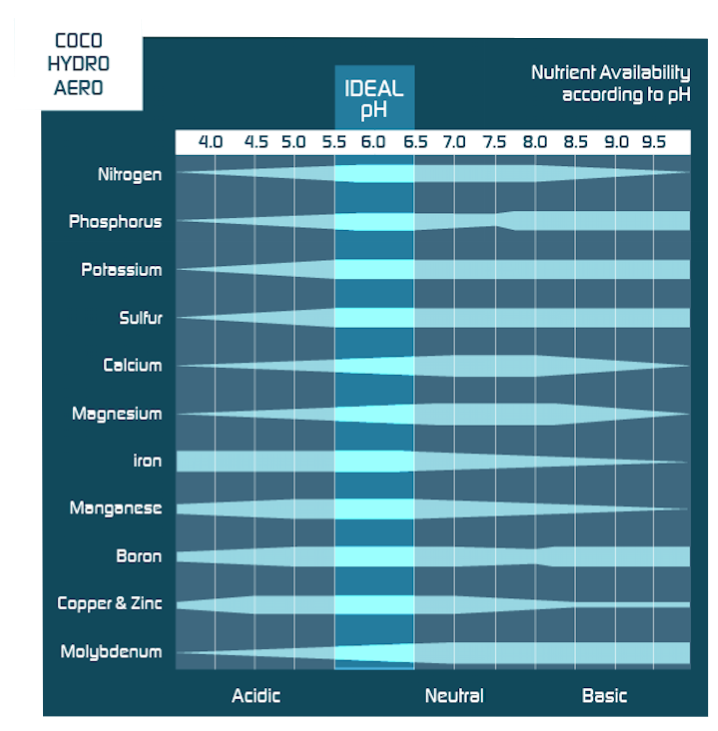Where can I buy Green House Feeding?
Green House Feeding products can be purchased on our website or in many of the reselling shops worldwide.
To find a shop near you, please use our store locator.
How do I use Green House Feeding?
There are two different ways to use Green House Feeding.
The easiest way is for those new to growing and who do not measure their PH and EC values. The second is for experienced growers who prefer to monitor their plants and feeding accurately.
Important: This schedule should only be used when growing in soil, using water with Calcium in it.
Beginner / easy growers:
If you grow on pre-fertilized soil we recommend starting using Green House Powder Feeding 2-4 weeks after planting the seeds and to start with a mild solution (0.25g per Liter). During the vegetative stage you can increase the feeding up to 0.7g per Liter.
With the beginning of the flowering stage you should slowly increase the amount of Powder Feeding until you reach 1g per Liter.
Following this schedule, there should usually be no problem and growers can achieve a decent yield.
In order to achieve the best possible results we recommend measuring pH and EC value of the feeding solution.
Needed items:
Scale Container Water PH +/-
![]()
![]()
![]()
![]()
Experienced growers:
Experienced growers usually measure their feeding solution to provide the plants with the exact amount of nutrients and the correct pH value of the solution. Whether you grow in coco, hydroponics or aeroponics – with all of these systems you should measure your pH and EC values.
When using a pH and EC meter you can optimize your growing and achieve much better results.
Steps to take when mixing nutrient solution:
- a) Check pH and EC value of the water and make sure the temperature is about 18-22 degrees Celsius. You should also check if your water contains enough Calcium.
- b) If your EC is 0,0 (using RO or rain water) you need to add Calcium to your water before adding Powder Feeding. Make sure your EC rises up to 0.3-0.4 EC
- Add Powder Feeding and mix well for 2-3 minutes, and then measure the EC value. If necessary repeat until you reach the desired value.
- When you reached the desired EC value, wait for 15-30 minutes.
- Then measure the pH and if necessary adjust it using pH up or pH down.
- When you reached the desired values, feed your plants.
Needed items:
PH & EC Meter Container Water PH +/- (Calcium)
![]()
![]()
![]()
![]() (if necessary)
(if necessary) ![]()
Can Green House Feeding be used on Every medium?
Green House Feeding can be used on every medium. However the feeding schedule is slightly different and if using anything than soil we recommend using a PH- and EC-meter in order to achieve the desired values and have full control over your feeding solution.
Soil
![]()
Soil or soil-based mediums are the most commonly used form of growing medium, mainly because they are available in most areas, cheap and easy to maintain.
Most beginner growers use soil mixes because soil also works as a buffer for pH-fluctuation and nutrient deficiencies.
There are different ready-to-use soil-mixes from different companies, as well as DIY soil-mixes where one can find many recipes on the Internet.
Most soil-mixes are pre-fertilized for the first 3-8 weeks. If the soil is heavily pre-fertilized the grower needs to be careful with seedlings and young plants. The grower does not have very much control over his feeding regime in that case. We recommend using only light fertilized soil, which contains enough nutrients for the first 3-4 weeks of the plants life.
Green House Feeding will work perfectly in soil. When growing in soil, we recommend feeding the plants only every other watering (water – nutrient solution – water – nutrient solution) to avoid salt build up in the medium. We also recommend flushing the medium 2-3 times with pH-balanced water during the whole cycle depending on the flowering time.
Due to the high quality of the mineral salts we use, the plant can assimilate the nutrients easily and salt build up will be minimal. When flushing regularly, there won’t be any excess salts left in the medium.
In the last 7-10 days of the flowering period we recommend to flush the medium only with pH-balanced water.
Coco Hydro Aero
![]()
![]()
![]()
Hydroponic growing is becoming more popular as it’s seen as people have more control over the feeding regime. The definition of hydroponics means ‘water-working’. This means as much as growing plants in a water and nutrient solution, without soil. Growing with a hydro-setup is usually more efficient and productive compared to soil setups. However it requires more attention of the grower, as he needs to monitor his pH and EC value closely.
In hydroponics you provide the exact nutrients your plants need. There are different hydroponic setups such as Deep Water Culture (DWC), Nutrient Film Technique (NFT), Ebb and Flow, Drip Systems and Aeroponic Systems.
Also growing in coco is a hydroponic method where the coco fiber is used in the same way one would use soil. However the feeding needs to be more controlled compared to soil, as coco is not working as a buffer.
Green House Feeding will work perfectly in coco and hydro setups.
Normally you will not have to use any other nutrients except the Powder Feeding.
Only in case you use RO water or rain water (with an EC of 0.0) we recommend adding our Additive: Calcium in order to raise the Calcium level to the desired value.
Normally you can keep your feeding solution in a light proof reservoir up to 10 days, however we recommend changing the solution weekly.
Which Green House Powder Feeding do I need?
Grow:
![]() Composition:
Composition:
N-P-K-(Mg): 24+6+12+(1,2)
Designed specifically for the vegetative-growth stage of all plants. Works very well with seedlings, young plants and all green plants.
Grow formula provides optimum development throughout the growth stage to obtain greener, stronger and more resistant plants.
Grow faster, greener and more vigorous than ever.
It is ideal for taking of cuttings. The easy assimilation of nutrients and the high Nitrogen content provides plants with a more robust and branched structure.
The thicker leaves accumulate more reserves, stimulating rapid rooting of cuttings.
Ideal for:
- Lettuce
- Ficus Benjamina
- Azaleas
- Erica Carnea
- All kinds of young and herbaceous plants
Short Flowering:
![]()
Composition:
N-P-K-(Mg): 16+6+26+(2)
Designed specifically for the growth and flowering stages of plant varieties with a short flowering time.
Short Flowering formula provides carefully prepared macro- and microelements in a balanced manner for all phases, growth and flowering. Without adding other components throughout the cycle, nutrients are provided in the proper ratio for easy absorption, perfect for early flowering plants
Ideal for:
- Tomatoes
- Cucumber
- Bell peppers
- Cyclamen
- Begonia
- etc.
Hybrids:
![]()
Composition:
N-P-K-(Mg): 15+7+22+(3,6)
Designed specifically for the growth and flowering stages of those plant varieties that originate from hybrid crosses with a intermediate flowering time.
Hybrids formula provides carefully prepared macro- and microelements in a balanced manner for all phases, growth and flowering. Without adding other components throughout the cycle, the nutrients are provided in the proper ratio for easy absorption, ideal for intermediate flowering plants
Ideal for:
- Cichorium
- Asteraceae
- Sun flowers
- etc.
Long Flowering:
![]()
Composition:
N-P-K-(Mg): 18+12+18+(1,2)
Designed specifically for the growth and flowering stages of those plant varieties with a long flowering time.
Long Flowering formula provides carefully prepared macro- and microelements in a balanced manner for all phases, growth and flowering.
Without adding other components throughout the cycle, nutrients are provided in the proper ratio for easy absorption, ideal for long flowering plants.
Ideal for:
- Balcony, bedding and potted plants
- Orchids
- etc.
Can Green House Powder Feeding be used for foliar feeding?
Green House Powder Feeding Grow can be used for foliar feeding.
Foliar fertilization is a highly effective way for quick nutrient uptake. By spraying the leaves, the plant can take up the nutrients quickly and the effects can be visible even within hours.
When mixing your solution for foliar feeding take 100ml of your regular feeding solution (e.g. 1g per 1 Liter) and mix those with 900ml water.
Our Additive: Calcium can also be used for foliar application to achieve fast results and strengthen the cells. We recommend using 0.5g per Liter in a foliar feeding solution.
Foliar fertilization should be done after your regular watering (pH and EC-values according to your feeding schedule) at low light intensity to avoid light burns.
For fast nutrient intake, the pH value for foliar feeding should be between 5.5-6.5
Is Green House Powder Feeding organic?
Our Green House Powder Feeding is a mix of high quality minerals in the correct composition for your plants. Minerals do not contain any living material and as such cannot be called organic. However that does not mean that the minerals are chemically produced.
There are two production methods for mineral fertilizers: Chemical synthesis and derived from rocks. Green House Powder Feeding is a combination of those two. All metal micronutrients are chelated with EDTA which is considered organic by the Fertilizer European Regulation EC 2003/2003 in Annex I section E. 3 page 50.
Can Green House Powder Feeding be used in combination with Dosatron®?
Green House Powder Feeding can be used with a Dosatron® system.
The recommended dosage for Dosatron® is 30g/L
The saturation point of Green House Powder Feeding at room temperature is 160g/L
Does Green House Green House Powder Feeding contain any harmful materials?
In terms of leaving residues in the medium, Green House Powder Feeding is a very clean product.
Urea:
Green House Powder Feeding does not contain urea.
Although urea is the easiest and cheapest way to deliver nitrogen to the plant we decided not to use urea as a source of nitrogen but other salts of higher quality, which do not leave residues such as Biuret in the medium.
Biuret is the result of condensation of two molecules of urea and is a problematic impurity in urea-based fetilizers. A build up of biuret in the medium decreases the risk of ammonia toxicity.
Heavy metals:
Green House Powder Feeding does not contain heavy metals that can be considered harmful for humans, animals or plants.
Chlorine:
Green House Powder Feeding does not contain Chlorine, which may kill beneficial bacteria in the medium.
Fluorine:
Green House Powder Feeding does not contain Fluorine, which is potentially toxic for the plants.
Does Green House Powder Feeding contain Sulfur?
Green House Powder Feeding contains a small amount of Sulfur and it is enough for the plant but is not obligatory to declare it on the label. Every country has different laws with the packaging label but most of them don't include the Sulfur as obligatory nutrient to specify on the label.
Green House Powder Feeding contains MgSO4 (magnesium sulfate) and other salts with a perfect ratio of sulfur.
Do I need to add other nutrients?
Our Green House Powder Feeding really is an All-In-One feeding solution, which includes all necessary macro- and micronutrients for the full growth cycle of your plants, and no other nutrients are necessary. Due to the powder form, all macro- and micro-nutrients can be combined in one product and don't need to be separated until use like most liquid products.
Only in case you use RO water or rain water (with an EC of 0.0) we recommend adding our Additive: Calcium in order to raise the Calcium level to the desired value.
When do I need to use Additive: Calcium?
Additive: Calcium
Calcium (Ca): 9% (chelated Calcium)
Calcium is essential for growing a healthy crop. It prevents and corrects deficiencies, which are caused due to lack of/or imbalance in the assimilation of Calcium.
Our Green House Additive Feeding CALCIUM is very soluble, easy to use and quickly assimilated.
![]()
- Very soluble, easy to use, quickly assimilated
- Chelated Calcium – EDTA is a stable product that does not interact with other elements.
- Strengthens cell membrane and cell walls to protect from pests and insect attacks.
- Presented in a powder form, it is very soluble in water.
- Ca2+ ion is protected by EDTA
- Minimum effort and very easy to use
- Enhances nutrient transportation
- Accelerates cell division and root extension
- It does not contain Chlorine
- It’s compatible with all kinds of fertilizers
- It is perfect to solve a lack of Calcium
How to use:
Mixing: When added to water make sure to start mixing immediately.
RO, Rainwater or any water with EC 0.0:
Because these kinds of water don’t have the necessary amount of either Calcium or Magnesium,
it is necessary to use Calcium additive when used with any Green House Powder Feeding products.
For your convenience Magnesium is included in Green House Powder Feeding
Also remember that most tap water already has enough Calcium.
Dilution Proportions:
| Water Hardness | dH | eH | fH | PPM CacO3 | Ca-Chelate | |
|---|---|---|---|---|---|---|
| Very soft | 3,00 | 3,75 | 5,40 | <70 | 0.13 - 0.11 oz/US gal | 1.0 - 0.8 g/L |
| Soft | 4,00 | 5,00 | 7,20 | 71 - 150 | 0.11 - 0.07 oz/US gal | 0.8 - 0.5 g/L |
| Medium | 8,40 | 10,50 | 15,10 | 151 - 250 | 0.07 - 0.01 oz/US gal | 0.5 - 0,1 g/L |
| Hard/Very hard | >21 | >26 | >37 | >251 | NONE | NONE |
dH = German degrees
eH = English degrees
fH = French degrees
| EC 0.0 | Ca-Chelate | |
|---|---|---|
| Seedling | 0.04 oz/US gal | 0.3 g/L |
| Growth | 0.11 - 0.16 oz/US gal | 0.8 - 1.0 g/L |
| Flowering | 0.13 oz/US gal | 1.0 g/L |
| Last 3 weeks | 0.20 oz/US gal | 1.5 g/L |
Can I add other products like Mycorrhizae, Trichoderma or Enzymes?
Yes, all those additives can be used in combination with Green House Feeding.
Mycorrhizae and Trichoderma increases the nutrient uptake and make the nutrients better available for the plants whilst Trichoderma protects the plant from harmful root fungus.
What is the pH Value?
The PH value shows the acidity or the alkalinity of water. (pH stands for the potential hydrogen ions in the water). The easiest and most accurate method to get a precise measurement is an electronic PH meter.
Throughout the scale of 1-14 (1 being very acidic and 14 being very alkaline) the absorption by the plant will be affected differently with the required nutrients.
Therefore we advise constant monitoring of pH levels in order to prevent damage to the root system and the plant.
Specific nutrients are better absorbed at different pH levels as shown in the graphic above.
What is the EC / PPM value?
The amount of ionic salts in water is measured by two scales, electrical conductivity (EC) and parts per million (ppm). The more ions are dissolved in the water the better it is at conducting electricity. With the EC & PPM we measure the amount of nutrients (salts) that are present in the water (feeding solution).
It is impossible to create one feeding schedule for all plants, as every plant is different and just like humans; the plants diets vary from lighter to heavier meals. The optimum EC value changes with different plants and foods.
Tap water usually has an EC value between 0,3 EC (=192 ppm) and 1,1 EC (=704 ppm). However it varies in different countries and areas.
In our feeding schedule you will always find the final EC value, which means the initial EC value of the water needs be taken into consideration.
Example:
Tap water EC: 0.7 (Amsterdam)
Desired EC value week 5 Hybrids: 1.6
We need to add the right amount of Green House Powder Feeding (0.9 points) to achieve the final EC value of 1.6
Important! If you need to adjust the pH value of your water (using pH+/-) you should always mix your nutrients solution first. When you reached the desired EC value you can add the pH regulating product.


